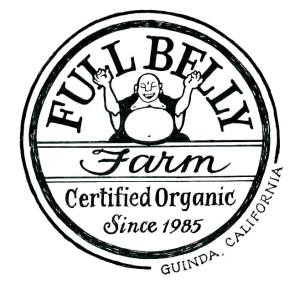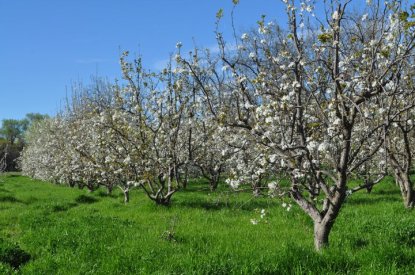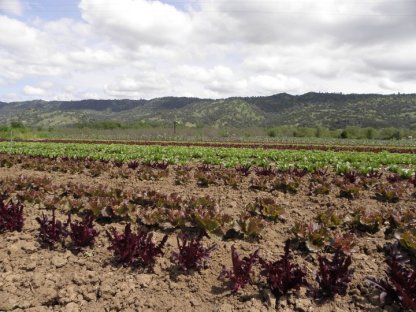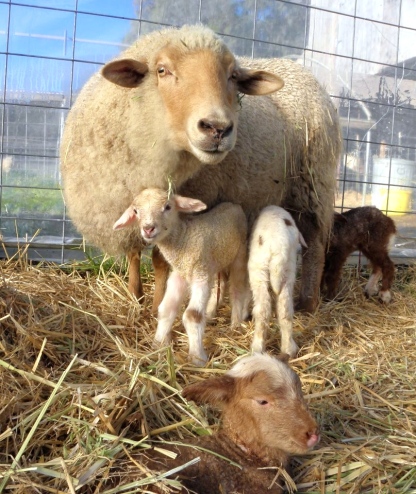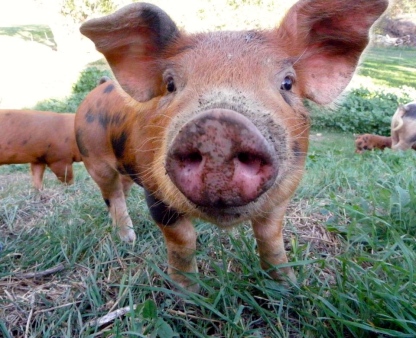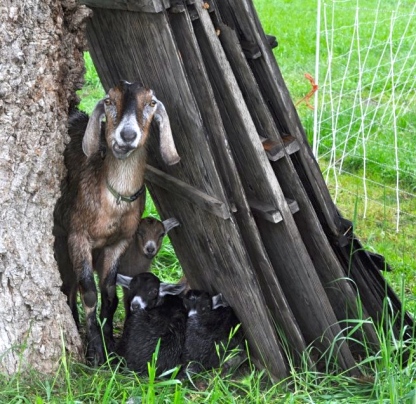Hallie Muller on Farming and the Food System
My name is Simon and I will be guest-blogging on the Farm Together Now website about once a month for the next several months. For my first post, I had the privilege of interviewing Hallie Muller of the amazing Full Belly Farm in Guinda, California. I’d love to talk all about the farm, but I’ll leave that to Hallie. Here’s the interview (with some photos of the farm mixed in):
Simon Willig: First, some background information on your farm: what do you grow/raise? Where is your farm located and what is your piece of land like (soil, history, layout, etc.)?
Hallie Muller: Full Belly Farm is a 450-acre CCOF certified organic diversified fruit, vegetable, grain, nut, and sheep farm. Started in 1984 by Paul Muller and Dru Rivers, Full Belly Farm is now home to three generations of farmers and is owned and operated by Paul, Dru, Judith Redmond, Andrew Brait, and Amon and Jenna Muller, Paul and Dru’s oldest son and daughter-in-law. We are nestled in the Capay Valley in Northern California, a valley known for producing some of the highest quality organic fruits and vegetables in California. Our farmland is a beautifully rich clay loam, perfect for growing year-round. The climate in our region allows us to farm every day of the year – with summertime temperatures reaching well over 100º and winter frosts are never so harsh that we cannot grow brassicas and leafy greens.
SW: What is your philosophy/approach to farming? What experiences/ideas inform this approach?
HM: We have created a farm with a “whole system” approach – every action must be made with purpose, thought, and consideration of the impact it will have on the long term sustainability of our farm. We see our farm as a three legged stool – the legs being ecological, economic, and social sustainability – and each leg is of equal importance. The farm must maintain a levels of ecological sustainability – healthy water systems, healthy soil, and biological diversity is vital to the overall success of our fruits and vegetables. Our farm must also be economically sustainable – and we have worked to create a cash flow that is year round through direct marketing and our Community Supported Agriculture program. Finally, the social responsibility and sustainability of our farm manifests itself in the overall health of our crew.
SW: Who performs the labor on your farm: humans, tractors, horses, etc.? Why?
HM: Labor on our farm is performed mostly by humans – every crop we grow (with the exception of nuts and grains) is hand harvested, washed, and packed. This allows for the highest levels of quality control when it comes to our farm’s products. We do use tractors for discing, cultivating, planting, and tilling our soil. Animals are also an essential component to our farm – our sheep, contained in mobile electric fencing, move from field to field eating crop residue. Chickens are used to control pests in our grapes and apples. Goats take care of blackberry brambles near our creek-beds. Our farm has tried to take on a whole system approach – one that looks at every living being on our farm and asks, “how can this creature be useful to our farm?”
SW: How do you approach pest/disease management on your farm?
HM: As an organic farm, we use an approach to pests and diseases that works well in our organic system. Firstly, crops are rotated from field to field on a seasonal basis, rarely appearing in the same field more than once in a three to five year period. Second, we try to keep on top of diseases and pests so that we are in control before the issues become too much to handle. This means that we have created biological diversity around our fields with hedgerows and native plantings that allow for native insect populations, many of whom combat pests in our fields. We also use organic pesticides and we have a [pest control advisor] who helps to advise our farm. Finally, we plant our crops in small, successive blocks which allows us to maintain a “not all of our eggs in one basket” mentality (crop failure, though a loss for our farm, is not the end of the world). Our diversity is our best management method against pests and disease.
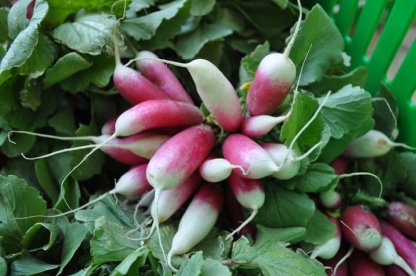
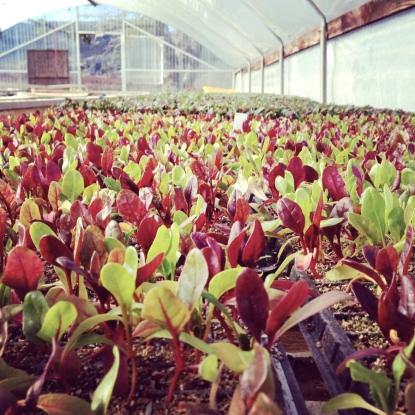
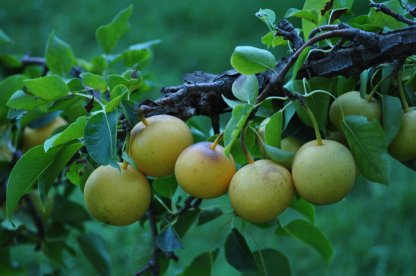
You can see in these pictures some of the diversity that Hallie mentions above. For a complete list of what Full Belly Farm grows as well as detailed information and recipes for each crop, check out their awesome crop timeline.
SW: Now for some broader questions about the food system: what is one big misconception consumers may have about food/farming?
HM: In my personal opinion, the biggest misconception is the real cost of food. American’s spend shockingly little on their food supply – and they expect it to be safe, tasty, and reliable. The price that consumers pay in the average grocery store does not reflect the real cost of producing that food. Organic and small scale farmers are often railed against because their food is “elitist” or too expensive for the common person, when in fact the price that those farmers are asking is the reflection of paying farm workers a fair wage, the true cost of organic seed, the true, non-subsidized cost of farmland and equipment and seeds, etc. The best way to change this misconception is through education – we find that our weekly newsletter that is delivered to each of our CSA customers is a great place for that to happen.
SW: What do you think is one of the biggest changes needed within our current food system?
HM: Continued support of small scale farms, less big ag vs. small ag mentality, and more consumer understanding of farming and food systems. There are so many opportunities for change! The thing that is most frightening for us is the movement towards more government regulation and less understanding of the realities of farm life by those making decisions. The Food Safety and Modernization Act has shaken many small farmers to the core – and continues to be a barrier for entry for new beginning farmers. This needs to change!
SW: How can consumers help to bring about change?
HM: Consumers can continue to vote with their food dollars – supporting small farmers at their local farmers markets, shopping at independent grocery stores, and joining CSA’s are great first steps!
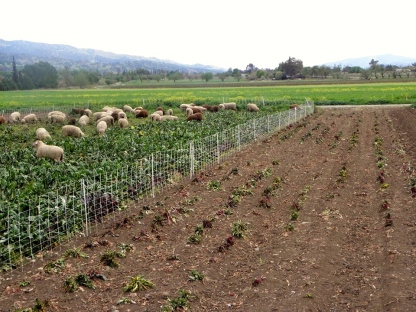
In a beautiful example of what Hallie mentioned earlier, the sheep here are eating the leftovers of a chard crop, helping to make way for a new planting and getting a meal in the process.
Check out the Full Belly Farm website and facebook page for more great info and photos.
Thanks for reading,
Simon
